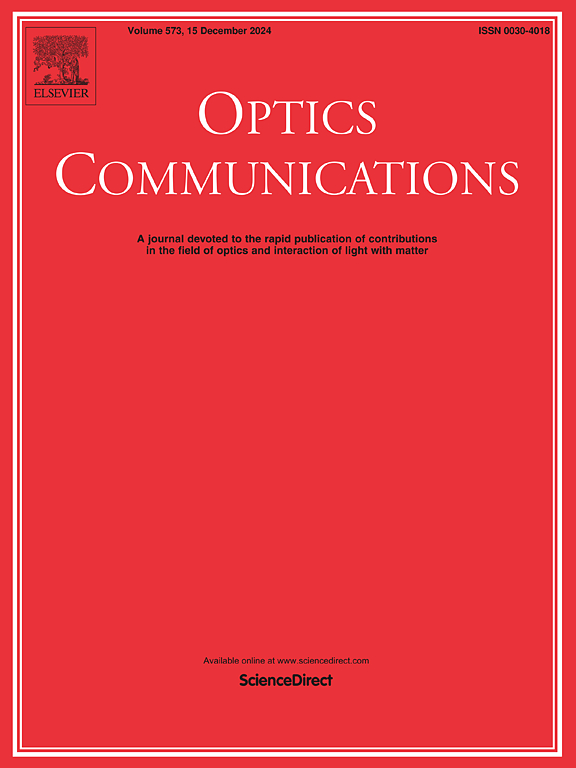Monolithic dual-wavelength semiconductor laser based on varying ridge waveguide widths with passive surface DBR defined by UV lithography
IF 2.2
3区 物理与天体物理
Q2 OPTICS
引用次数: 0
Abstract
Dual-wavelength lasers are utilized in difference frequency terahertz generation and shifted excitation Raman difference spectroscopy. Semiconductor lasers can be used as an excitation light source for the above applications due to their small size, light weight and high conversion efficiency. A dual-wavelength semiconductor laser based on varying ridge waveguide widths with passive distributed Bragg reflector (DBR) gratings is demonstrated. The fabricated device exhibits a threshold current of approximately 30 mA at 15 °C. Under certain injection currents, stable dual-wavelength operation is observed, with lasing wavelengths centered at 796.8 nm and 797.4 nm, respectively, yielding a wavelength spacing of 0.6 nm. Furthermore, the proposed dual-wavelength laser possesses advantages including low threshold, excellent stability and short wavelength spacing. The manufacturing process of this device utilizes ultraviolet lithography, eliminating the need for secondary growth steps, thereby demonstrating immense market potential and competitiveness in the realm of commercial applications.
基于可变脊波导宽度的单片双波长半导体激光器,由UV光刻技术定义无源表面DBR
双波长激光器用于差频太赫兹产生和移位激发拉曼差分光谱。半导体激光器具有体积小、重量轻、转换效率高等优点,可作为上述应用的激发光源。介绍了一种基于变脊波导宽度和无源分布布拉格反射器光栅的双波长半导体激光器。所制备的器件在15°C时显示出约30 mA的阈值电流。在一定的注入电流下,观察到稳定的双波长工作,激光波长分别以796.8 nm和797.4 nm为中心,波长间隔为0.6 nm。该双波长激光器具有阈值低、稳定性好、波长间隔短等优点。该装置的制造过程利用紫外线光刻技术,消除了对二次生长步骤的需要,从而在商业应用领域显示出巨大的市场潜力和竞争力。
本文章由计算机程序翻译,如有差异,请以英文原文为准。
求助全文
约1分钟内获得全文
求助全文
来源期刊

Optics Communications
物理-光学
CiteScore
5.10
自引率
8.30%
发文量
681
审稿时长
38 days
期刊介绍:
Optics Communications invites original and timely contributions containing new results in various fields of optics and photonics. The journal considers theoretical and experimental research in areas ranging from the fundamental properties of light to technological applications. Topics covered include classical and quantum optics, optical physics and light-matter interactions, lasers, imaging, guided-wave optics and optical information processing. Manuscripts should offer clear evidence of novelty and significance. Papers concentrating on mathematical and computational issues, with limited connection to optics, are not suitable for publication in the Journal. Similarly, small technical advances, or papers concerned only with engineering applications or issues of materials science fall outside the journal scope.
 求助内容:
求助内容: 应助结果提醒方式:
应助结果提醒方式:


